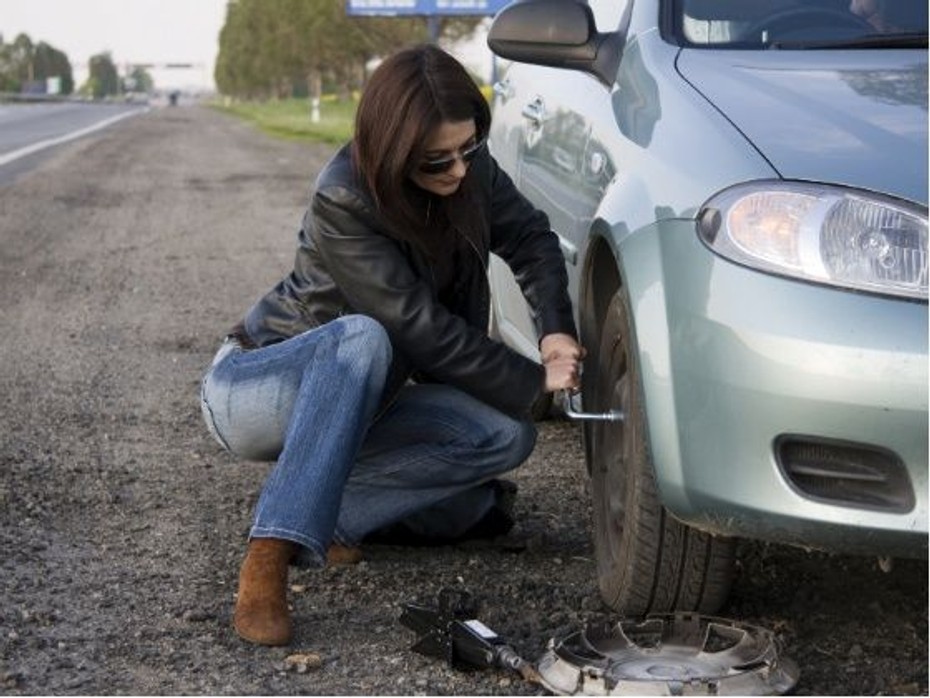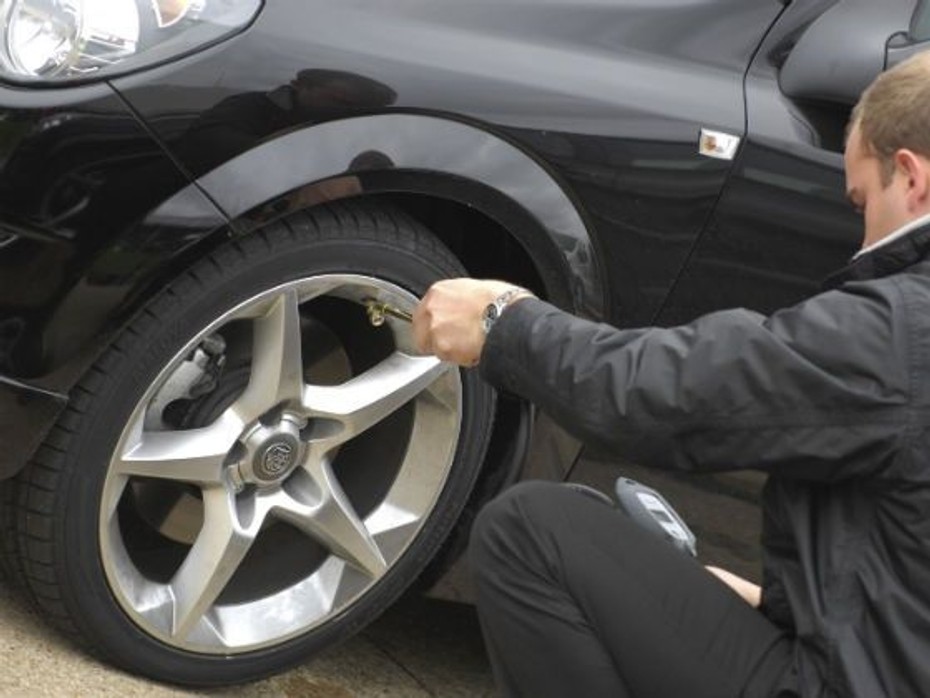Explore all New Cars of 2024
 Upcoming 2024 Maruti Suzuki Dzire To Get These 5 Features Over The Current ModelUpcoming 2024 Maruti Suzuki Dzire To Get These 5 Features Over The Current Model
Upcoming 2024 Maruti Suzuki Dzire To Get These 5 Features Over The Current ModelUpcoming 2024 Maruti Suzuki Dzire To Get These 5 Features Over The Current Model


For most middle class individuals, their personal cars, in different shapes and sizes, are the preferred mode of transport for a road trip. India being a huge country, most individuals and their families usually take at least one, if not more holidays a year. Citizens on metros like Bangalore, Delhi and Mumbai are known to take weekend trips to a nearby hill station or beach resort. People usually end up checking oil and water levels in their car before starting their journey. Tyres though, are usually ignored. Here are a few things you should do before setting off on a journey.
Perform a visual check:
Tyres that have sidewall cracks should not be pushed into doing duty on a long road trip. Although in dry weather conditions, sidewall cracks are not much of a concern, in the wet they are a matter of concern. Water usually makes its way into smaller cracks and cervices, a phenomenon that can be extremely hazardous for the overall rigidity and construction of the tyres.
Tyres with severe uneven wear need to be changed. Before changing them though, ensure that you know what is causing the wear. Uneven wear may be caused due to worn out bushes in the suspension, changing which can cause the tyres to last much longer. Similarly, sidewall bulging or bubbling is a sure shot indication of tyre failure. A tyre with a sidewall bubble cannot be repaired and has to be changed.
Tyres which have their tread wear indicators exposed (Worn out), exposed steel wires, tyres with bulging and tyres having damages on sidewall are dangerous to drive at higher speeds or for longer journeys. Tyres with skewed tread give an uncomfortable ride and are also susceptible to blow outs.
Tyre Pressures:
Many people like to slightly lower their tyre pressures so as to increase the contact patch between their cars and the road under low traction circumstances and to counter expansion of the air inside your tyre due to longer driving stints. Although to the common layman this would make perfect sense, it is an incorrect practice. Not only does this increase the chances of getting a puncture exponentially, it also puts unnecessary stresses on the tyre sidewall. Lower pressures also increase the friction in your tyres leading to the tyres producing more heat than they ought to. This extra heat may not a problem when the car is driven through rains or wet roads, but can severely affect the tyres in dry weather conditions.
Similarly, increasing the air pressure in your tyres will result in a reduced contact patch between the tyres and the road, which can lead to loss of grip. The smaller contact patch will also greatly reduce your car’s stopping distance in the wet under emergency braking situations.
If you intend to drive at high speed for longer period, it is recommended to inflate the tyres 5psi more than recommended by the car maker. (Such recommendation is given in various tyre standard manuals like JATMA-Japan, ETRTO-Europe, TRA-America, ITTAC-India. They also state that if sustained speeds are expected to exceed 180, inflation has to be increased by 10 psi-But such information may not be required at the moment in India as we don’t expect people driving more than 180kmph continuously in India)
One important tip about Tyre pressure is that it has to be checked or adjusted when tyres are cold. Cold does not mean chilling temperature, it refers to ambient temperature. Since tyre heats up on running, the pressure inside tyre increases. If you check pressure in hot condition, it will be shown higher than the cold pressure. If you adjust air pressure in hot condition, cold pressure will be adjusted at lower level causing several problems explained earlier.

Drive carefully:
Most situations that lead to a damaged tyre can be avoided if one takes a little more care while driving. Ensure that going through a pot holed ridden street is not done in a hurry. Slowing down and adding a few minutes to your journey now is better than loosing a lot of time replacing a punctured tyre. Always remember to avoid the edges of the pothole as far as possible. If you do enter a pothole at high speeds, it is best to pull over and check whether any damage has been done. It is also advisable to never take your car through a pothole that has water in it as one never knows how deep that pot hole can be.
Carry an extra spare tyre if space and money permits:
If you can afford an extra spare wheel and tyre, it is always best to carry one. Many new cars usually come equipped with a space saver tyre. It is best to usually buy another space saver tyre directly from the service centre. One can also trade in your space saver for a standard sized tyre. In fact, if your car does travel higher distances on a regular basis, we would strongly advice a second spare tyre, not just for the monsoons, but for everyday use.
If you use a tubetype tyre, you can carry a spare tube. If you use tubeless tyres, carry spare tubeless valve. In case of tube damaged beyond repairs of tubeless valve repairs, highways are known for charging 5-10 time cost for an unbranded, incorrect size tube or valve. Whether carrying a spare tube or tubeless valve, it is better to keep it in airtight polythene wrap which will keep it away from harmful ozone and avoid oxidation/ ozone cracks.

Tyre Blow outs:
A tire blowout at high speed is one of the most dangerous automotive emergencies one can ever face. With India’s roads improving every year, cars getting quicker and the level of driver training at an all time low, many lives are lost every year due to tyres disintegrating under duress.
How to prevent a blow out:
As ZigWheels has always stressed, prevention is better than cure. The first step toward handling a blowout situation is to make sure the odds of it not happening are in your favour. The single most common cause of tire blowouts is underinflation. In America and in most European countries, tire pressure monitors are now mandatory on all cars. In India though, only higher segment cars get a tyre pressure monitor, and in come cases, even those are unreliable. If you don't have tire pressure monitors, keep an eye on your tire pressures. This can be done at least once or twice a month. Tires will lose some air over time anyway since they undergo a lot of expansion and contraction and underinflated tires will not only be at higher risk for blowouts, but will have an effect on fuel efficiency and performance.
What to do if a blow out happens:
Let's say you're driving down the highway at about 80-100kmph, enjoying your drive on one of the finer roads in the country and suddenly one of your right-side tires blows out. The first thing that happens is that the car veers to the right due to the flat tyre on one side pulling the car towards it. Although the first instinctive response is to slam on the brakes and yank the wheel to the left, it is the worse thing you can do. Doing this will most likely cause the car to lose all grip and yaw back to the left. At this point one ceases to be a driver in control of their vehicle and turns into a passenger strapped into a projectile that weighs about 1500kgs. The single most important thing to do when a tire blows out is to control the panic reaction. Although easier said than done, it could be the difference between staying alive and something much worse. Below are some steps you can take if the above happens to you:
1. Keep your foot on the accelerator pedal and steer in the direction of the skid to “drive through” the blowout. If necessary, give it even a bit more power to overcome the initial drag that is pulling you to one side. The most important thing is to have the wheels rolling so that you can keep control of your car.
2. Correct your steering with small and gentle corrections to bring the car back into line. When you have the car under control, start easing your foot off the throttle pedal to slow down.
3. Use minimal braking and pull off the road when your speed has come down. If possible, pull off so that the blown tire is away from the road to make changing the tire safer and easier.
4. Don't go for the hazard lights until the car has stopped. Rummaging around on the dashboard can take your concentration off the road and taking your wheels off the steering wheel isn’t the best thing one can do in a situation like this.
Controlling a blow out is possible only if you are not doing speeds that are excessive and dangerous. Stick to the speed limits at all times to ensure you can take care of you and your family in case of an emergency.
India's largest automotive community